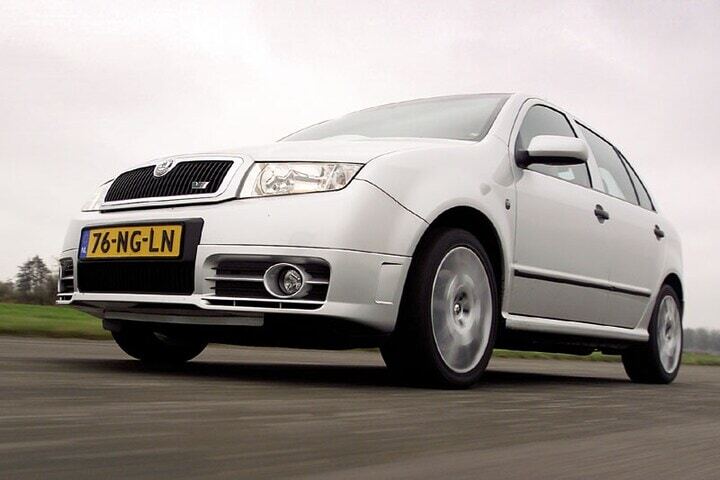Now it’s the electric motor

A diesel as a sporty top model is a rarity. We cannot recall a BMW M5 tds, Mercedes-Benz 190D 3.0 Evo, or Toyota GRD Yaris. Skoda deliberately put on the bold diesel shoes.
Back in the day, you had diesels. And man, were we happy with them. The undersigned remembers the period in which the diesel version of a particular model was often the finest. At 120 km/h, an atmospheric 1.6-16V would quickly turn at a buzzy 4,000 rpm and you had the feeling it was already out of breath. A turbodiesel was then the epitome of tranquility, turning half as fast and always had a reassuring push in the back ready. The first few hundred kilometers after refueling, the fuel gauge needle seemed glued to the full position. Ideal if you wanted to make a lot of kilometers. For sporty driving pleasure on small roads, there was plenty of other material to think of. A hot hatchback for example.
Sporty flavor
In 2003, Skoda had the noble courage to combine the two described uses in a cozy way. Yes, the Fabia RS was a hot hatch with a diesel engine. The idea for a fast top model did not come completely out of the blue, because the Czechs had just registered with the Fabia for the World Rally Championship. Then a sporty offshoot to the stem is a logical step: sporty flavor for the entire range and the enthusiastic follower can report to the dealer for a street version of the rally car. Only all available gasoline engines from the VW shelves had already been tackled in the grateful Fabia nose. For example, there was a spicy 1.4-16V of 100 hp on the price list and also a two-liter of 115 hp. Not bad material for the compact Fabia, which wanted to run 185 and 195 km/h with it respectively. Not enough, the Czechs judged.
Then plan B came into effect. Or rather: plan D, because it was the well-known TDI that put ‘Project-RS’ on the rails as a crisis manager. The result was half-hearted; with 310 Nm, the block dragged like crazy, but that only made the Fabia fast in a straight line. The stiffer dampers did nothing for the cornering behavior. Skoda learned quickly, because the second RS simply drank gasoline. The new Elroq RS can now do it electrically. The link with the TDI is easy to grab: pleasantly quiet, and a push in the back is never far away. But the discussion about electric motors for the propulsion of hot versions, and certainly hot hatchbacks, remains.
Seat went a step further
Seat was at that time the sporty brand of the Volkswagen Group and went a step further in the diesel area. It even delivered a 160 hp variant of the 1.9 TDI in Fabia platform mate Ibiza, in the Ibiza Cupra. You could also get that with a gasoline engine, a 180 hp 1.8 turbo.